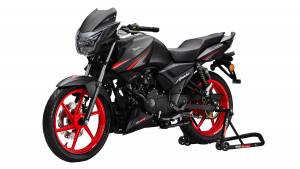TVS Jupiter 125 first ride review
We were recently invited to the TVS Motor test track at the company's plant in Hosur to ride the new Jupiter 125, prior to its national launch. Now the TVS Jupiter 125 is an all-new scooter, TVS simply hasn't given the older 110cc TVS Jupiter a heart transplant from the 125cc TVS Ntorq, nor has it just slapped on some new panels on the existing scooters and called it a new scooter. The Jupiter 125 is an all-new scooter - right from the design, to the engine and even the chassis. Let's get more into it then, shall we?

Design and Features:
Yes, the Jupiter 125 sports an all-new design and this time around, all of it body panels are crafted metal. The scooter looks very sober, sleek and modern from the front with that nice shapely handlebar-mounted headlamp unit and the LED DRLs on the apron. The side panels show off some strong lines and flow nicely into the well rounded off rear section with its large grabrail that sits atop the part-LED tail lamp unit. It's got new alloy wheels and there are even some chrome finished bits all around that give the Jupiter 125 a bit of an up-market look.
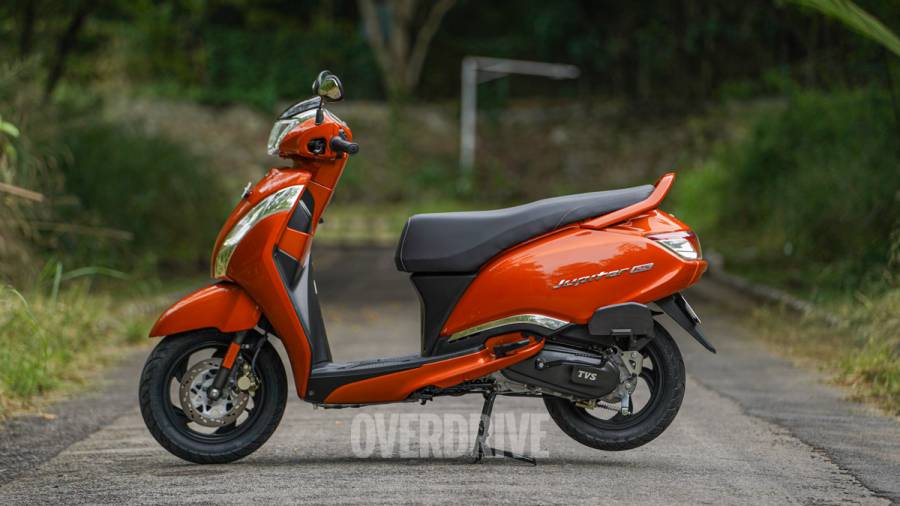
Now TVS has paid lot of attention to the aero design of the Jupiter 125 and tried to optimise the flow of air from the front end as well as the sides to cool the engine and keep the heating the seat over long distance rides. Now we can't comment on that particular aspect this time around, because we're just riding the scooter around briefly. Moving on, the unique bit about this 125cc TVS is the location of its fuel tank which is now moved under the foot board, while the fuel filler cap located on the front of the scooter some added convenience. The only downside to the tanks' relocation is that its capacity is now down to 5-litres from the older 110cc Jupiter's 6-litre tank. In addition to locking the steering, rotating the key in the ignition slot also provides access to the under-seat storage area, and also pops open the fuel filler lid.
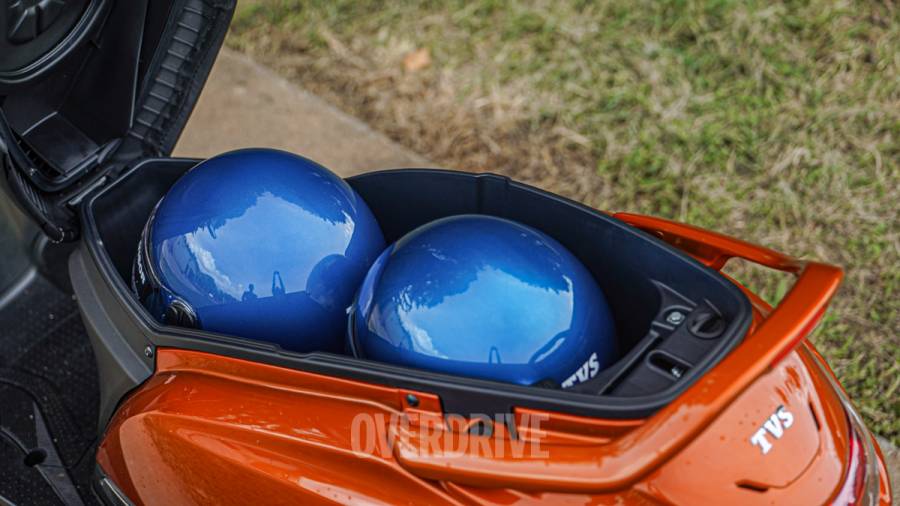
The Jupiter 125 boasts the longest seat in its class (790mm) and the relocation of the tank has meant that the scooter gets 32-litres of under-seat storage space which is more than enough room to stash two half-face helmets. The new TVS also gets a USB charging port and a small 2-litre storage pocket under the right side of the handlebar. Another big plus point of this scooter is the fact that it comes with plenty of leg room too.
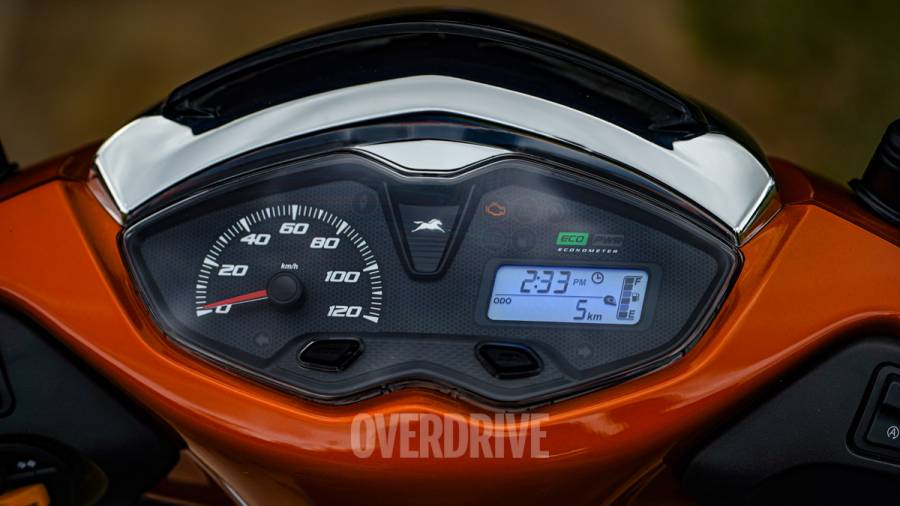
The dashboard of the Jupiter's 125 comprises an analogue speedometer on the LHS and a small digital screen on the right that displays information like odometer and trips readings, time, level of fuel as well as the usual warning and indication lights.
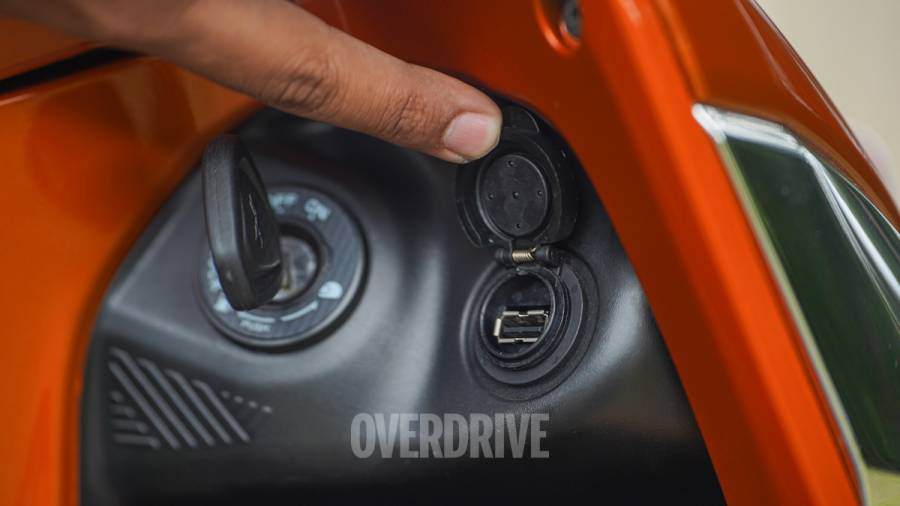
The Jupiter 125 gets some safety kit in the form of a side stand engine inhibitor which kills the engine if you try to set off with your side stand down. The scooter also features start-stop technology which should save you from burning fuel unnecessarily when you come to a halt.
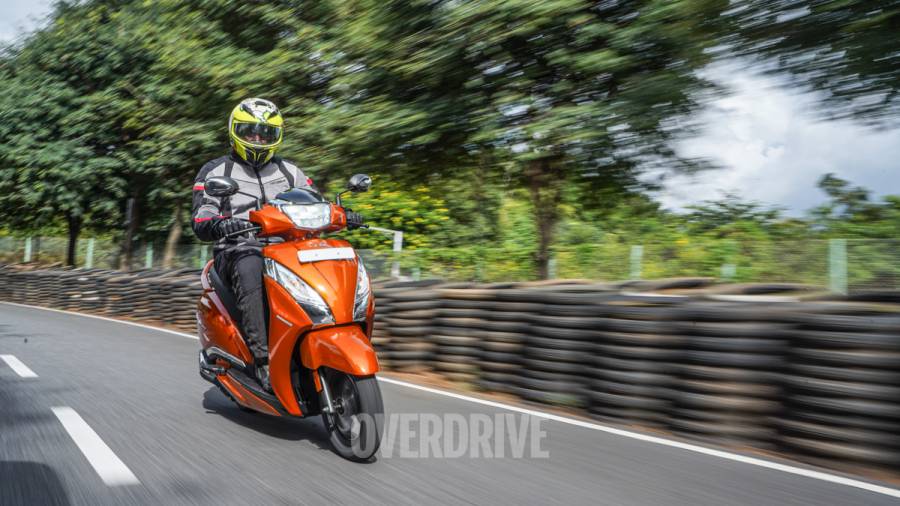
Engine and Performance:
Now as I mentioned before the engine in the Jupiter 125 is all-new. Unlike TVS's Ntorq range of scooters which all emphasise on the aspect performance and functionality, TVS has designed the new Jupiter 125 to focus on the aspects of frugality and convenience. And in keeping to this tune, the company has paid a lot of attention to making the new 124.8cc engine run economically while keeping NVH levels down. The new air-cooled, 2-valve motor employs a lot of light weight components and features some modern low friction tech. The single-pot engine produces a max power of 8.3PS and a max torque of 10.5Nm which is on par with this TVS scooters 125cc rivals in the form of the Honda Activa 125 and Suzuki Access 125. We haven't been able to test the new scooter for efficiency, so we'll have to wait till we get our hands on the scooter again, out in real world conditions, to comment on that particular aspect.
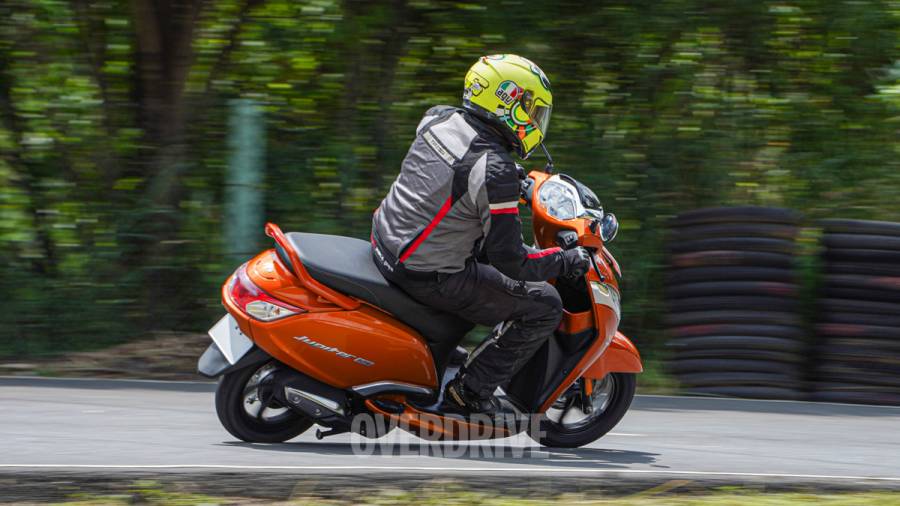
Off the line, the new Jupiter definitely doesn't feel like the quickest of the 125cc lot, but it's no slouch either. What's commendable is the way this engine delivers its power. Power delivery from 20-80kmph is smooth, linear and seamless with NVH levels on the down low. North of 80kmph, the scooter runs out of steam and the speedo needle pretty much refused to touch the 90kmph indication. But seeing as this scooter is basically designed to be the frugal and comfortable more than anything, it doesn't feel to be lacking any performance really, because bigger numbers on the speedo are ideally not what you should be looking for on a commuter scooter like the Jupiter 125.
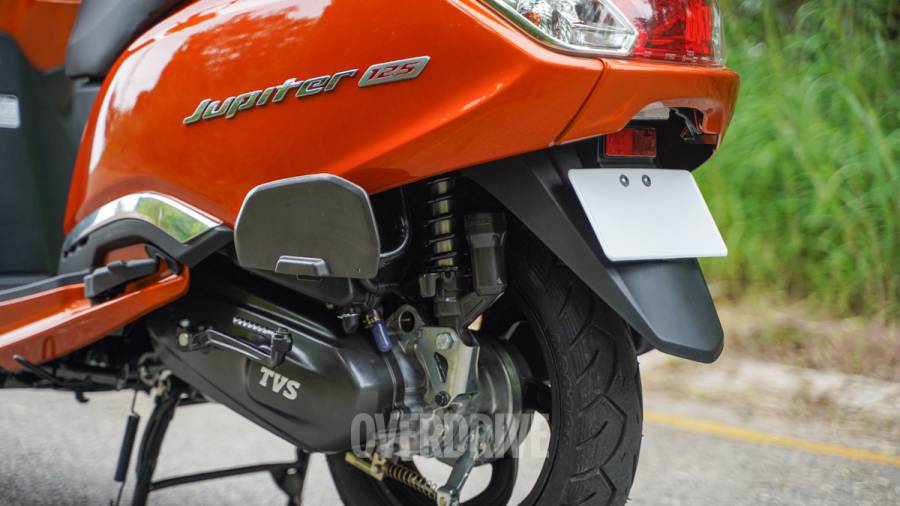
Chassis, Suspension and Brakes:
Like its engine, the chassis of the Jupiter 125 is all-new too. TVS claim that the new platform has been optimised to provide obvious structural rigidity while also optimising the scooters agility and handling. The Jupiter get a telescopic fork up front which allows 77mm of travel, while the 3-step adjustable canister charged monoshock manages the rear. Stopping power comes in the form of a 220mm disc up front which works in tandem with the 130mm drum at the rear when the right lever is employed.

Ride and Handling:
As soon as I got astride the Jupiter 125 I liked the fact that the long, contoured seat gave me ample room to find the perfect riding position which was great, a quick glance behind and there's more than sufficient room for the pillion to do the same too. As soon as I set off, I noticed how light and agile the Jupiter felt on the go.

Now the scooter isn't lacking outright performance, it will get up to and sustain a decent speed of 80kmph without a fuss. And when tested I found the brakes and tyre setup to work brilliantly in bringing the scooter to a halt on command. I found the suspension setup of the Jupiter to be spot on even when ridden a bit enthusiastically and the best part is that the 3-step monoshock at the rear can be adjusted by hand without using any tools. So, once you have it set to your riding weight and style, the rigid underbone chassis and the suspension weigh up nicely ironing out small, sharp bumps which should help tremendously for when you're caught off guard.
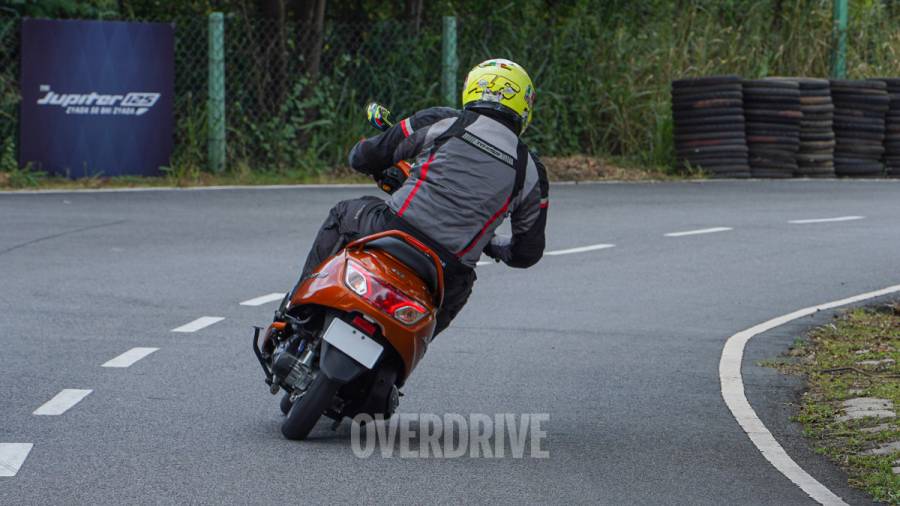
Yes, it is a commuter scooter, but I like the fact of how easy it is to flick around at low speeds and better still, the Jupiter is not afraid of being thrown into long sweeping corners at speed. We're yet to see how the Jupiter 125 fairs out on the street, where conditions are a lot more drastic than out here on the test track, but on first impressions alone, it would seem like TVS definitely has a winner on its hands with the Jupiter 125.
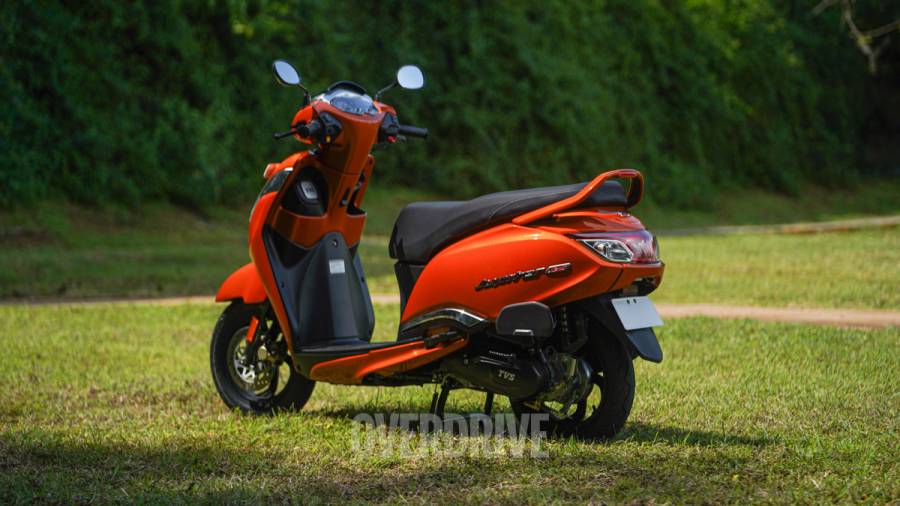
In Conclusion:
Now it should be mentioned that the Jupiter 125 won't replace the smaller Jupiter 110, rather both will co-exist with their unique strongpoints. And although it's a bit odd that TVS has opted not to include Bluetooth connectivity on the Jupiter 125, the scooter is still very competitively priced at Rs. 73,400, and still comes with a decent list of features and makes an extremely strong case or itself in its segment with its attractive looks, features of convenience and downright functionality. With it's pricing, the TVS Jupiter 125 is around Rs 7,000 more affordable than the Honda Activa 125 and almost Rs 4,000 cheaper than the Suzuki Access 125. The Honda Activa 125 and the Suzuki Access 125 definitely have their work cut out for them.
Starts Rs 73,400
125cc
Automatic
8.30
10.50
-NA-
